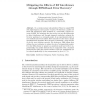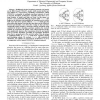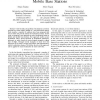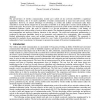2282 search results - page 440 / 457 » Detecting Compromised Nodes in Wireless Sensor Networks |
EWSN
2010
Springer
13 years 10 months ago
2010
Springer
On a common sensor node platform (Telos) we sample RSSI with high frequency during packet reception. We find that a packet collision (RF interference) often manifests as a measurab...
INFOCOM
2010
IEEE
13 years 5 months ago
2010
IEEE
Traditional wireless broadcast protocols rely heavily on the 802.11-based CSMA/CA model, which avoids interference and collision by conservatively scheduling transmissions. While C...
INFOCOM
2006
IEEE
14 years 1 months ago
2006
IEEE
— Until recently, the problem of localization in wireless networks has been mainly studied in a non-adversarial setting. Only recently, a number of solutions have been proposed t...
CORR
2006
Springer
13 years 7 months ago
2006
Springer
The pervasiveness of wireless communication recently gave mobile ad hoc networks (MANET) a significant researcher's attention, due to its innate capabilities of instant commu...
MASS
2010
13 years 5 months ago
2010
Wireless sensor networks typically conserve energy by following a periodic wakeup-sleep schedule: nodes minimize idle time and spend most of their time in a low power sleep state. ...




